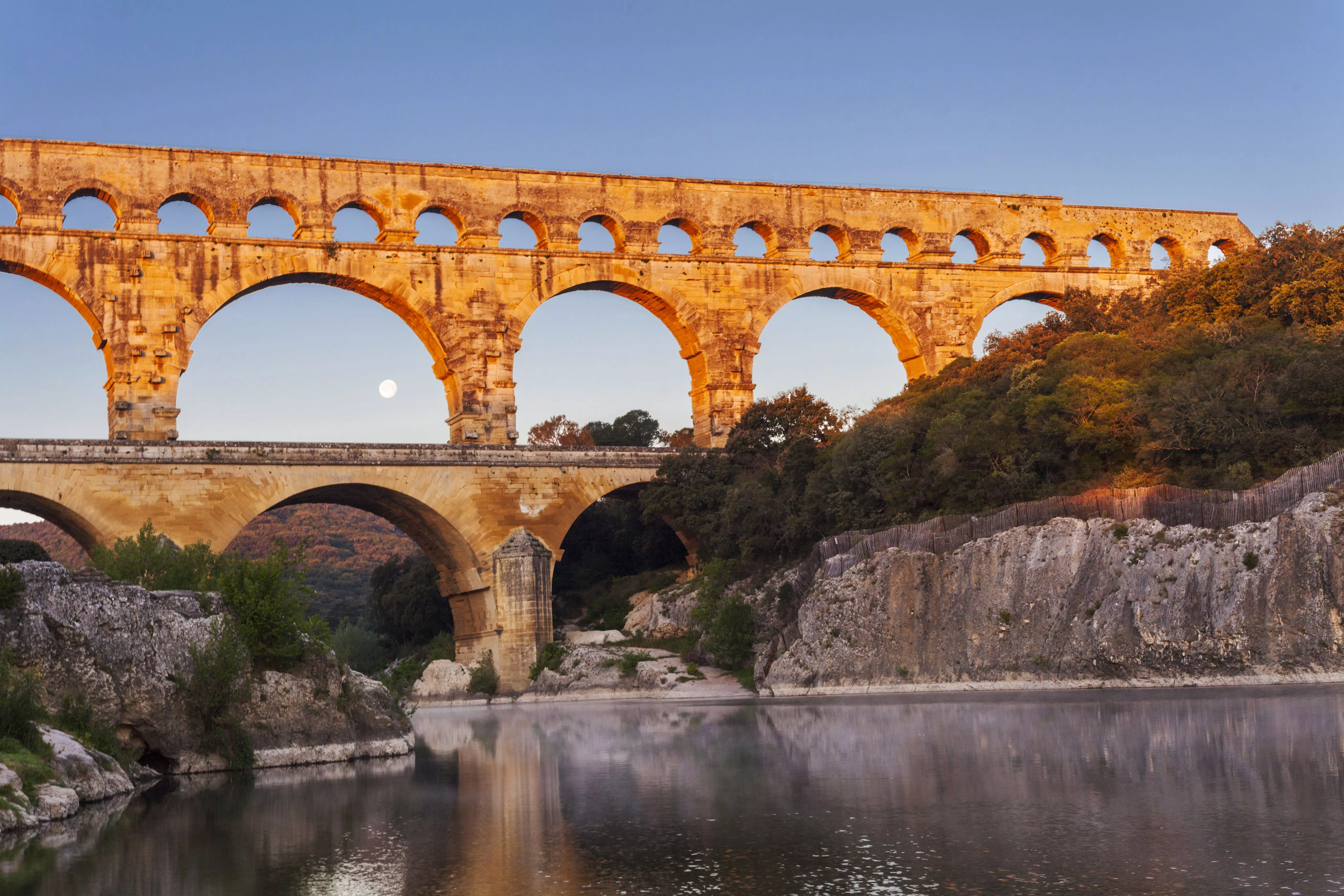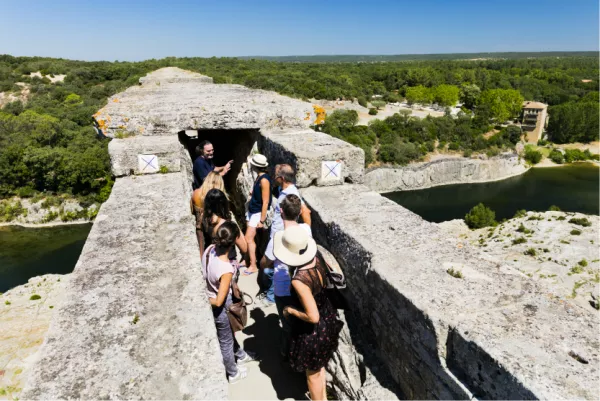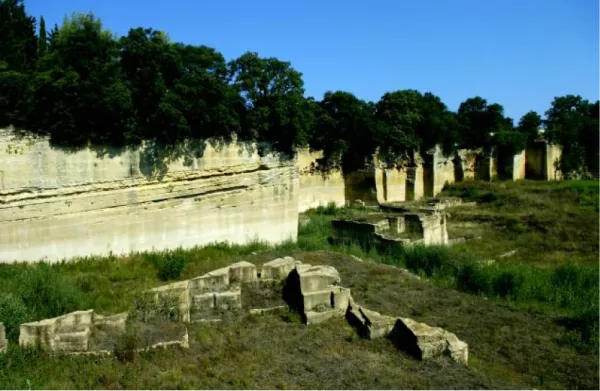The monument
A masterpiece of ancient architecture, the Pont du Gard is one of the best-preserved Roman remains in the world. Discover an imposing monument at the heart of this Roman aqueduct.
The Pont du Gard is a bridge-aqueduct built by the Romans in the 1st century AD.
At 49 metres, it is the highest Roman bridge-aqueduct in the world. It is made up of 3 rows of arches one above the other (6 arches on the first level, 11 arches on the second level and 47 arches originally), which is also a rare achievement for its time.
Finally, it is remarkable for its excellent state of preservation, which means that today it is admired as a masterpiece of human creative genius. It is the only example of an ancient 3-storey bridge still standing today. Nearly a thousand men worked on this colossal project, which took just 5 years to complete.

tonnes
total weight
meters
One of the largest major arches in the Roman world
m3
Equivalent to the solid volume of the Eiffel Tower
meters
Height of the Pont du Gard
century
Construction period
Technical construction
Juxtaposed arches, a form of construction standardisation.

Built around 50 AD, under the reigns of Claudius or Nero, the aqueduct to which the Pont du Gard belongs supplied the city of Nîmes with large quantities of pressurised water for 5 centuries.
The Roman city of Nîmes, the ancient ‘Nemausus’, grew so rapidly in the 1st century that it decided to build an aqueduct, following in the footsteps of Rome, the capital and model for the entire Roman Empire. This achievement gave the city new prestige: fountains, thermal baths, running water in wealthy homes and clean streets all contributed to the city's enjoyment and well-being.
With an average gradient of 25 cm per kilometre, one of the lowest ever achieved at the time, the aqueduct carried 30,000 to 40,000 m3 of running water per day by gravity from a spring in Uzès, over a distance of 50 kilometres to Nîmes. These ancient works are regularly maintained and consolidated.
For enthusiasts, there is a signposted discovery trail running alongside these remains.

Located 600 metres downstream from the bridge on the left bank of the Gardon, the Estel quarry was one of the main places where the stone used to build the Pont du Gard was extracted. Recent excavations at the quarry have uncovered the ancient site and its quarry faces, providing a better understanding of the techniques used by the Romans. The blocks of stone were transported by water and by land, depending on the location of the site.
In the 18th century, when the road bridge (Pont Pitot) was being built next to the ancient structure, the quarry underwent major new quarrying.
Despite the 18 centuries that separate these two sites, the evolution of techniques is very slight and hardly perceptible to the non-specialist observer. The site, which is listed as a historic monument, is closed to the public, but full-scale reconstructions can now be seen in the Museum.
The Pont du Gard is one of the best-preserved Roman remains in the world. Steeped in history, it has also been a source of inspiration for many artists.